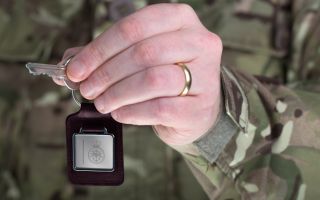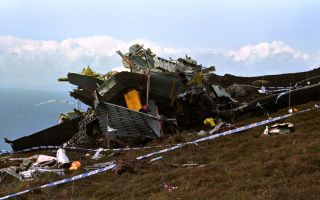Ukraine war shows Royal Navy how to strike unprepared enemy with maritime tech, expert says
A military expert says the war in Ukraine has shown the Royal Navy the importance of using potent maritime technology in beating a formidable enemy.
In the two years since the Russian invasion, Ukraine has used every weapon at its disposal to hit the Russian Navy – from cruise missile strikes on Russia's naval headquarters at Sevastopol to drone attacks on Russian warships.
It has been a David and Goliath battle, but Ukraine's use of asymmetric warfare has paid off.
Professor Alessio Patalano believes the conflict will give the Royal Navy three key takeaways.
Firstly – geography matters. The Russian Navy failed to capitalise on its presence in Crimea. It did not protect its ships.
For the UK, with a strong military presence in the North Sea, Gibraltar and Cyprus, it highlights the need to find more innovative ways to protect the fleet.
Prof Patalano told Forces News' Simon Newton: "The UK is actually debating at the moment the extent to which mobile long-range land-based fire can actually release some of the capabilities that at the moment would be deployed for that – notably destroyers with wide area defence capabilities.
"If you have this mobile deployable land-based, long-range fires that you can deploy in the proximity/vicinity of these strategic points, then all of a sudden…putting a cost, if you want, on others trying to go through these spaces, releases some of your forces to do other stuff."
The next lesson, on which the Royal Navy is hard at work, is how to use drone technology to increase its lethality.
Professor Patalano explained: "The second thing is about – can we have a thousand-ship Navy? By that I mean a Navy that incorporates unmanned and autonomous capabilities, both on the surface and in the air, as part of our forces structure.
"Of course we can – the Navy is thinking about it. It has one of the largest undersea autonomous they call programme at the moment that it's exploring in terms of 'what would be the best way to use these very large submersibles as other ships that deploy additional drones as delivery tools, if you want, to begin with'."
Last week, Kyiv's armed forces claimed Ukraine destroyed a Russian landing ship belonging to Moscow's Black Sea Fleet.
In a post on Telegram, Ukraine's Ministry of Defence said it had destroyed the Caesar Kunikov, an amphibious assault vessel, using uncrewed surface drones.
Alongside the post, the Ukrainian MOD released footage of the drone strikes.
Finally, the ability of Ukraine to neutralise Russia's Black Sea fleet also prompts questions about how the Navy uses its ships.
Prof Patalano told Forces News: "One of the lessons that is emerging from Ukraine is that, you know this constant anxiety – 'are fleets obsolete? Are carriers obsolete?' We're almost missing the bigger picture here.
"The point is not about the ship, but what we're really looking at is how incredibly transformative the age we live in. It's about sensor systems, it’s about combat weapons, it's what you put on the ship.
"Fleets will remain absolutely central – because without a fleet, you cannot project men, human beings and therefore the states and the institutions they represent and stand for, through the ocean, far away from national shores."
While Ukraine had predominantly been a land and air war, it has highlighted how potent maritime technology can be against an unprepared enemy – a lesson the Royal Navy will scrutinise and digest as it prepares for the naval engagements of the 21st century.







